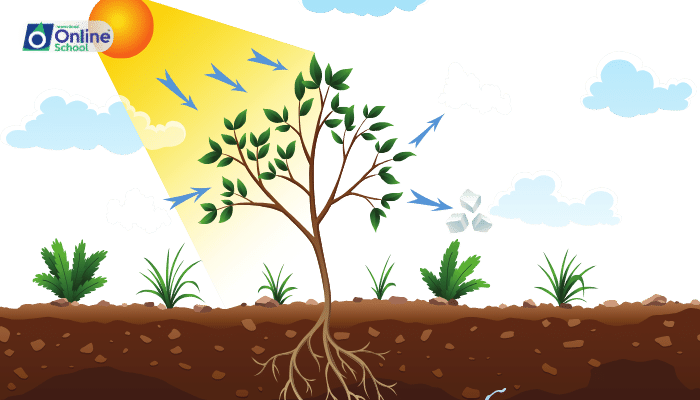
Learning Outcomes in Listing:
i. Recognize the dependence of all life forms on the process of photosynthesis.
ii. Understand how chlorophyll captures light energy and initiates the conversion into chemical energy.
iii. Distinguish between the light-dependent reactions and the Calvin cycle (light-independent or dark reactions) in photosynthesis.
Learning Outcomes Described:
Students will learn why photosynthesis is not merely a plant process but the bedrock of life's energy supply. They will delve into the role of chlorophyll in capturing light energy and its transformation into chemical energy used to form carbohydrates. Additionally, the lesson will differentiate between the two phases of photosynthesis: the light-dependent reactions that capture solar energy and the Calvin cycle where this energy is used to synthesize glucose from carbon dioxide and water.
Summary of Lesson:
Photosynthesis is a vital biological process through which sunlight is converted into chemical energy, with chlorophyll playing the pivotal role of capturing light. This energy is then stored in carbohydrate molecules, such as sugars, which are used to fuel the growth and metabolism of plants and, by extension, all other forms of life that rely on plants for food.
i. Dependence on Photosynthesis:
Photosynthesis is the primary source of organic matter for nearly all life. Through photosynthesis, plants produce glucose, which is then used by themselves for energy and growth, and by herbivores (and subsequent carnivores) when they consume plant matter.
ii. Chlorophyll and Energy Conversion:
Chlorophyll, the green pigment located within the chloroplasts, absorbs light, primarily in the blue and red wavelengths, and uses this energy to drive the synthesis of carbohydrates from CO2 and water.
iii. The Stages of Photosynthesis:
Light-Dependent Reactions: These occur in the thylakoid membranes of chloroplasts where light energy is converted into chemical energy as ATP and NADPH.
The Calvin Cycle (Dark Reactions): In the stroma of chloroplasts, the ATP and NADPH produced in the light reactions are used to convert carbon dioxide into glucose during a series of enzyme-mediated steps.
List of Important Questions for Self-Study:
i. Why is photosynthesis critical for the survival of not just plants but all life forms on Earth?
ii. What is the role of chlorophyll in photosynthesis?
iii. How are ATP and NADPH used in the Calvin cycle?
iv. What would be the global consequences of a significant decline in photosynthetic activity?
v. How do the light-dependent reactions and the Calvin cycle complement each other in photosynthesis?
Important Terminologies Used in Lesson:
i. Photosynthesis: The process by which plants, algae, and some bacteria transform light energy into chemical energy stored in glucose.
ii. Chlorophyll: A green pigment responsible for the absorption of light to provide energy for photosynthesis.
iii. Light-Dependent Reactions: The first stage of photosynthesis where light energy is converted into chemical energy (ATP and NADPH).
iv. Calvin Cycle: The set of chemical reactions that take place in chloroplasts during photosynthesis and do not require light. Also known as the light-independent reactions or dark reactions.
v. Thylakoid: A membrane-bound compartment inside chloroplasts and cyanobacteria. They are the site of the light-dependent reactions of photosynthesis.
vi. Stroma: The fluid-filled space surrounding the thylakoids in chloroplasts where the Calvin cycle takes place.